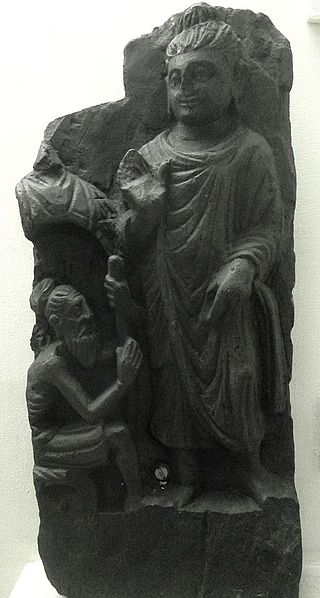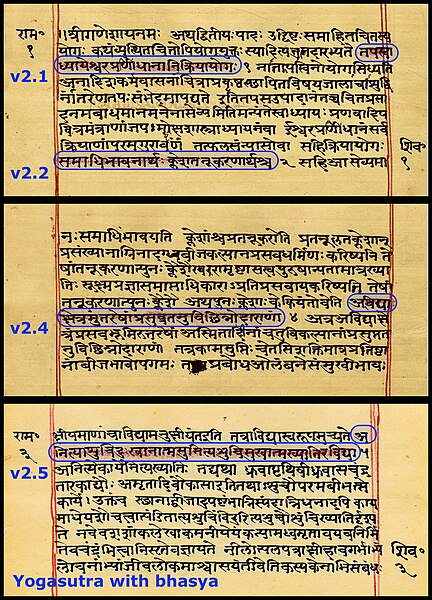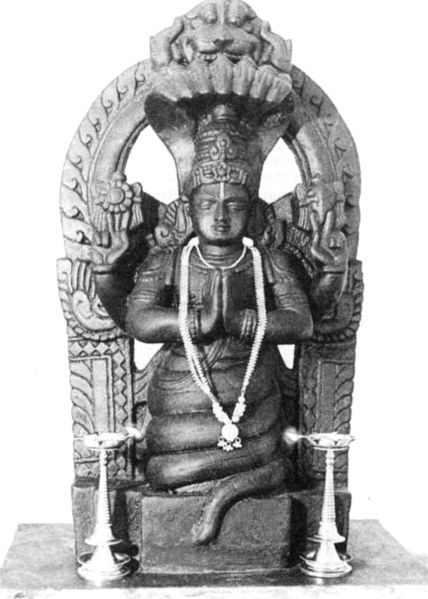Buddhism and Hinduism have common origins in the culture of Ancient India. Buddhism arose in the Gangetic plains of Eastern India in the 5th century BCE during the Second Urbanisation. Hinduism developed as a fusion or synthesis of practices and ideas from the ancient Vedic religion and elements and deities from other local Indian traditions. This Hindu synthesis emerged after the Vedic period, between 500–200 BCE and c. 300 CE, in or after the period of the second urbanisation, and during the early classical period of Hinduism, when the Epics and the first Puranas were composed.
The original Lion Capital of Ashoka, from Sarnath, depicts the Dharmawheel (dharmachakra), which symbolizes the concept of Dharma in both Buddhism and Hinduism.
Vishnu (Upulvan) statue in Seema Malaka Buddhist temple, Colombo
In Tibet, many Buddhists carve mantras into pebbles as a form of devotion.
Buddha meets a Brahmin, at the Indian Museum, Kolkata
The Yoga Sutras of Patañjali is a collection of Sanskrit sutras (aphorisms) on the theory and practice of yoga – 195 sutras and 196 sutras. The Yoga Sutras was compiled in the early centuries CE, by the sage Patanjali in India who synthesized and organized knowledge about yoga from much older traditions.
Some pages from a historic Yogasutra manuscript (Sanskrit, Devanagari). The verses are highlighted and are embedded inside the bhasya (commentary).
Statue of Patañjali, its traditional snake form indicating kundalini or an incarnation of Shesha






